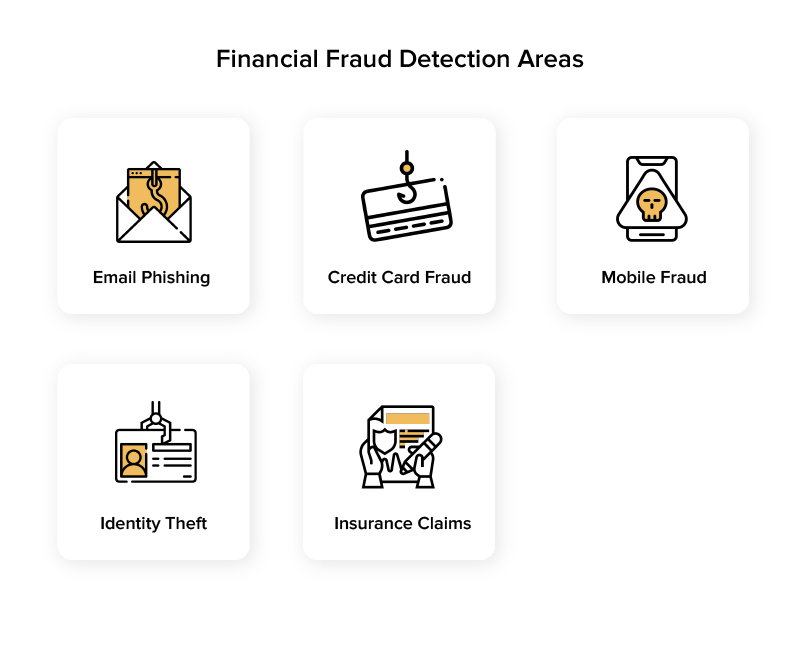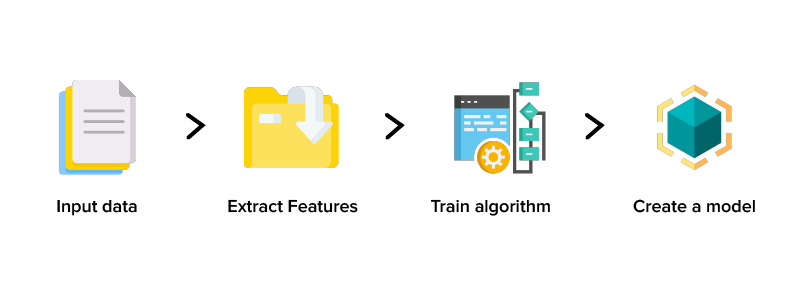How Machine Learning Helps in Financial Fraud Detection in the FinTech Industry
The financial services sector is undergoing digital transformation, and the driving force behind it is machine learning (ML). ML provides systems with the ability to automatically learn and improve from experience without being explicitly programmed.
As the finance sector operates on tons of personal data and billions of critical transactions every second, it becomes especially vulnerable to fraudulent activities. Scammers are always seeking to crack the servers to get valuable data for blackmailing.
According to PwC’s Global Economic Crime and Fraud Survey 2020, respondents reported losses of a whopping $42 billion over the past 24 months due to fraudulent activities. Banks and financial institutions have no choice but to tighten their defences by adopting innovative technologies such as machine learning.
Machine learning is providing the financial services sector with the means to protect their businesses and defeat cybercriminals. According to a report by Markets and Markets, the global fraud detection and prevention (FDP) market is expected to grow to USD 38.2 billion from USD 20.9 by 2025, at a CAGR of 12.8%.
Fraud detection and prevention areas include money laundering, insurance claims, electronic payments, and bank transactions.
In this article, we will discover the main ways machine learning in finance can be used for fraud detection. Read on!
Major areas of financial fraud in the Finance sector

Before we dive into the details of machine learning in financial industry, let’s get to the different areas where financial fraud detection software can assist enterprises.
1. Email phishing: This is a type of cybercrime wherein attackers send fake messages and website links to users via email. These emails are seemingly legit and authentic that anyone can misjudge them and enter the vulnerable data that puts them at risk.
To avoid such situations, you can use automated methods for detecting phishing using machine learning. These methods are based on classical Machine Learning algorithms for classification and regression.
2. Credit card fraud: In an increasingly digital world, credit card fraud has become quite common. This type of financial fraud involves stealing debit cards or credit card numbers through unsecured internet connections.
Machine learning algorithms help identify which actions are authentic and which ones are illegal. If someone tries to cheat the system, an ML model can alert the bank and take measures to negate the activity.
3. Mobile fraud: Machine learning integration in anti-fraud systems is particularly crucial when payment methods extend beyond physical cards and into the realm of mobile phones.
Smartphones now feature NFC chips, enabling users to pay for products just with their phones. This means your smartphone is prone to hacking and cyber threats. Machine learning in Finance is an effective tool to detect abnormal activities for each user, thus minimizing mobile fraud risks.
4. Identity theft: Information such as user’s name, bank details, passwords, login credentials, and other extremely sensitive information is under great threat if a cybercriminal comes into play. Identity theft puts both individuals and enterprises at risk.
Machine learning in Finance helps examine and check identity documents such as passports or driving licenses against secure databases in real-time to ensure all fraud cases are detected. Besides, ML can be also used for fighting fake IDs by enabling biometric scanning and face recognition.
5. Insurance claims: Insurance fraud typically includes fake claims of car damage, property, and even unemployment. To reduce such frauds, insurance companies spend an extensive amount of time and resources to validate each claim. However, this process is expensive as well as prone to hacking.
Machine learning due to its superior pattern recognition capabilities helps resolve insurance claims with utmost accuracy and find fake claims.
[Also Read: 5 Ways Fintech Industry is Using AI to Woo Millennials]
Why should you use machine learning for fraud prevention?
As evident from the ML uses in different financial fraud areas mentioned above, the finance and banking industry considers machine learning to be extremely helpful in financial fraud detection. The high volume of transactional and consumer data makes it ideal for the application of complex machine learning algorithms. ML helps banks and financial institutions to identify and flag fraudulent activity in real-time.
The increased accuracy of machine learning algorithms provides financial firms with a significant reduction in the number of false positives (where transactions are incorrectly flagged as declined and fraudulent) and false negatives (where genuine instances of fraud are missed). This is the reason why ML has taken the prime spot in the finance sector.
If still in doubt on how machine learning can help in detecting frauds for your financial services business, go through the pool of benefits mentioned below.
1. Faster data collection: As the velocity of commerce is increasing, it’s important to have quicker solutions like machine learning to detect fraud. Machine learning algorithms can evaluate enormous amounts of data in a very short amount of time. They have the ability to continuously collect and analyze data in real-time and detect frauds in no time.
2. Effortless scaling: Machine learning models and algorithms become more effective with increasing data sets. Machine’s learning improves with more data because the ML model can pick out the similarities and differences between multiple behaviors.
Once genuine and fraudulent transactions are found, the system can work through them and begin to pick out those that fit the bucket.
3. Increased efficiency: Contrary to humans, machines can perform repetitive tasks and detect changes across large volumes of data. This is critical for fraud detection in a much shorter amount of time.
Algorithms can accurately analyze hundreds of thousands of payments per second. This reduces costs as well as time taken to analyze transactions, thus making the process more efficient.
4. Reduced security breach cases: With the implementation of machine learning systems, financial institutions can combat frauds and provide the highest level of security to their customers. It works by comparing every new transaction with the previous (personal information, data, IP address, location, etc) one and detecting suspicious cases. As a result, financial units can prevent fraud related to payment or credit cards.
Now that we have seen the benefits of using machine learning, let’s dive into the machine learning models used for fraud detection.
Machine learning models and algorithms for fraud detection
Here are the types of machine learning models and algorithms used for detecting financial fraud in the finance industry. So, let’s understand them one by one.
1. Supervised learning: Supervised learning works for cases like fraud detection in deep learning environments in FinTech. In this model, all information has to be labeled as good or bad. And it is based on predictive data analysis.
2. Unsupervised learning: An unsupervised learning model detects anomalous behavior in cases where there is no such data or little transaction data available. It continuously analyzes and processes new data and updates its models based on the findings. It learns the patterns over time and decides whether they’re legitimate or fraudulent operations.
3. Semi-supervised learning: It works for cases where labeling information is either impossible or too expensive and requires human intervention.
4. Reinforcement learning: This model allows machines to detect ideal behavior automatically within a specified context. It helps machines to learn from the environment and find actions that minimize risks.
How does an ML system work for fraud detection?
The fraud detection process starts with gathering and segmenting the data using machine learning systems. Then the machine learning model is fed with training algorithms to predict the probability of fraud.
Below are the steps that show how an ML system works for fraud detection:

1. Input data: To detect fraud, the machine learning system first needs to collect data. The more data an ML model gets, the better it can learn and polish its fraud detection skills.
2. Extract features: The next step is feature extraction. At this stage, features describing both good and fraudulent customer behaviors are added. These features usually include:
- Identity: It comprises the fraud rate of customers’ IP addresses, age of their account, number of devices they were seen on, etc.
- Order: This feature shows the number of orders customers made, average order value, number of failed transactions, and more.
- Location: This feature helps to find out if the shipping address matches the billing address, shipping country matches the country of the customer’s IP address, and fraud rate at the customer’s location.
- Payment methods: It helps to identify the fraud rates in credit/debit cards issuing banks, the similarity between customer name and billing name, etc.
- Network: It includes the number of emails, phone numbers, or payment methods shared within a network.
3. Train algorithm: An algorithm is a set of rules that needs to be followed by an ML model to decide whether an operation is fraudulent or legitimate. The more data your business can provide for a training set, the better the ML model will be.
4. Create a model: When the training is over, your company will receive a machine learning model for fraud detection. This model can detect fraud in no time with high accuracy. But to be effective in fraud detection, a machine learning model needs to be constantly improved and updated.
Financial fraud detection using machine learning – Use cases
Using ML-powered modern fraud protection systems, financial institutions greatly reduce the risks of missing suspicious transactions, human errors, and cases of security breaches. Machine learning algorithms can process huge volumes of data and protect it from fraud.
Compliance.ai is a startup that uses adaptive machine learning models in FinTech to automate research and track financial regulatory content and regulatory updates in a single platform.
Companies like PayPal are also using machine learning to enhance their fraud detection and risk management capabilities. Through a combination of linear, neural networks, and deep learning techniques, PayPal’s risk management engines can determine the risk levels associated with a customer within milliseconds.
Machine learning helped such large corporations to prevent issues such as fake accounts, payment frauds, and suspicious transactions. ML takes care of all the dirty work of predictive analytics and data analysis and allows companies to grow safe from fraud.
Final thoughts
Enterprises all over the world have started using machine learning to prevent financial fraud. It is the most innovative tool that can help prevent fraudulent operations that lead to greater losses every year.
Machine learning allows creating more complex algorithms for analyzing various transactions and suspicious financial behavior, thus minimizing the risks of financial loss.
That’s why hiring machine learning development services has become the topmost priority for the financial services industry. At Appinventiv, our experts empower different companies with various innovative solutions and approaches to improve their productivity and reduce financial risk.
If you want to implement ML systems or financial fraud detection software into your business, feel free to contact us. We will help you understand the immense benefits of this innovative technology and help you scale your business while reducing overall costs.

strategies your digital product..





